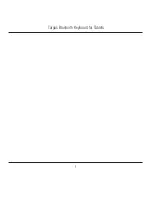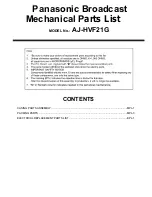
(F) Setting of acceleration/deceleration time and acceleration/deceleration pattern
Parameters
5 - 256
Shortest acceleration/deceleration (Pr. 292 = "1, 11", Pr. 293)
●
Set this parameter to accelerate/decelerate the motor at the shortest time. This function is useful
when the motor needs to be accelerated/decelerated at a shorter time, such as for a machine, but
the designed value of the machine constant is not known.
●
This function adjusts the acceleration/deceleration time to accelerate/decelerate the motor with
the maximum torque that can be output with the inverter. Pr. 7 "Acceleration time" and Pr. 8
"Deceleration time" settings are used as reference, and their settings are not changed.
●
Use Pr. 293 "Acceleration/deceleration separate selection" to apply the shortest acceleration/
deceleration to one of acceleration and deceleration only.
When "0 (initial value)" is set, the shortest acceleration/deceleration is performed for both accel-
eration and deceleration.
●
Since the FR-A820-00490(7.5K) or lower, FR-A840-00250(7.5K) or lower capacity inverters are
equipped with built-in brake resistors, set Pr. 292 to "11". Set "11" also when a high-duty brake
resistor or brake unit is connected. The deceleration time can further be shortened.
●
When the shortest acceleration/deceleration is selected under V/F control and Advanced mag-
netic flux vector control, the stall prevention operation level during acceleration/deceleration
becomes 150% (adjustable using Pr. 61 to Pr. 63). The setting of Pr. 22 "Stall prevention operation
level" and stall level by analog input are used only during a constant speed operation.
Under Real sensorless vector control and vector control, the torque limit level (Pr. 22, etc.) is
applied during acceleration/deceleration. The adjustments by Pr. 61 to Pr. 63 are disabled.
●
It is inappropriate to use for the following applications.
–
Machines with large inertia (10 times or more), such as a fan. Since stall prevention operation
will be activated for a long time, this type of machine may trip due to motor overloading, etc.
–
When the inverter is always operated at a specified acceleration/deceleration time.
NOTES
Even if automatic acceleration/deceleration has been selected, inputting the JOG signal (JOG
operation), RT signal (second function selection) or X9 signal (third function selection) during an
inverter stop will switch to the normal operation and give priority to JOG
operation, second function selection or third function selection. Note that during operation, an
input of JOG and RT signal does not have any influence even when the automatic acceleration/
deceleration is enabled.
Since the shortest acceleration/deceleration is made with the stall prevention operation being
activated, the acceleration/deceleration speed always varies according to the load conditions.
By setting Pr. 7 and Pr. 8 appropriately, it is possible to accelerate/decelerate with a shorter time
than when selecting the shortest acceleration/deceleration.
Summary of Contents for FR-A800
Page 2: ......
Page 4: ......
Page 22: ...Contents XVIII ...
Page 30: ...Related manuals Introduction 1 8 ...
Page 122: ...Connection of stand alone option units Installation and wiring 2 92 ...
Page 180: ...Basic operation procedure JOG operation Basic operation 4 32 ...
Page 934: ...Check first when you have a trouble Protective functions 6 46 ...
Page 1031: ...Appendix EC Declarations of Conformity FR A800 A 47 ...
Page 1032: ...EC Declarations of Conformity Appendix A 48 ...
Page 1033: ...Appendix EC Declarations of Conformity FR A800 A 49 ...
Page 1034: ...EC Declarations of Conformity Appendix A 50 ...
Page 1035: ...Appendix EC Declarations of Conformity FR A800 A 51 A 5 2 EMC Directive ...
Page 1036: ...EC Declarations of Conformity Appendix A 52 ...
Page 1037: ...Appendix EC Declarations of Conformity FR A800 A 53 ...
Page 1038: ...EC Declarations of Conformity Appendix A 54 ...
Page 1039: ...Appendix EC Declarations of Conformity FR A800 A 55 ...
Page 1040: ...EC Declarations of Conformity Appendix A 56 ...
Page 1041: ......
















































